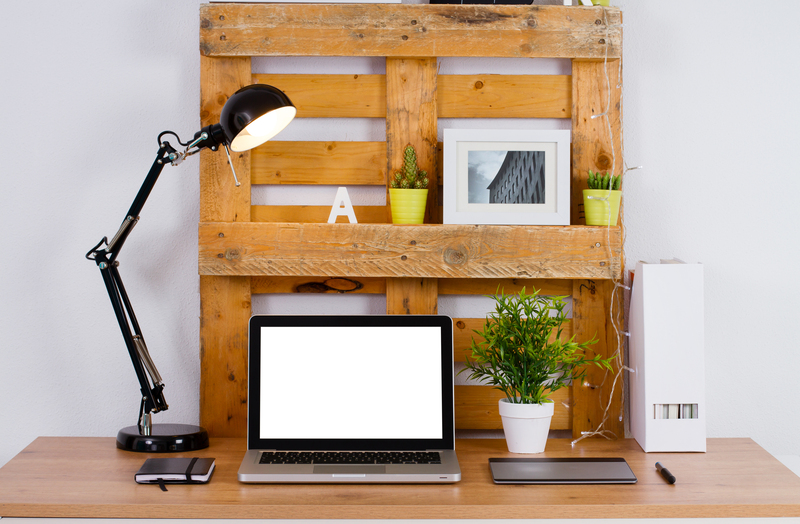Create a Sanctuary of Calmness by Clearing the Clutter
In a world that never stops buzzing, creating a sanctuary of calmness at home or at work has become critical for mental well-being and productivity. Clutter--both physical and mental--can be a relentless source of stress, blocking peace and clarity. In this comprehensive guide, discover how clearing the clutter can help you transform your living or working space into a tranquil sanctuary, ultimately leading to a calmer and more focused life.

Why Clutter Disrupts Your Peace
It's easy to underestimate the impact that clutter has on our lives. Physical clutter invades our personal spaces, while digital and mental clutter can overwhelm our thoughts. Clutter disrupts your sense of calmness and can negatively influence your mood, creativity, and health. Understanding the scope of this problem is the first step towards resolve.
The Hidden Cost of Clutter
- Decreased productivity: Searching for misplaced items wastes precious time and increases frustration.
- Higher stress and anxiety: Cluttered environments have been linked to higher cortisol (stress hormone) levels.
- Reduced creativity: A chaotic space can block inspiration and impair focus.
- Poor sleep quality: Untidy bedrooms can lead to restless nights.
- Relationship tensions: Disagreements over messiness are common among family members or roommates.
Clutter is more than just a visual nuisance; it's a barrier between you and your inner sanctuary.
Understanding the Psychology Behind Clutter
Before you can create a calm environment by clearing the clutter, it's essential to understand why clutter accumulates and what psychological needs it may be serving. Many people keep items for emotional reasons:
- Sentimental attachments: Letting go of keepsakes can feel akin to erasing memories.
- Fear of scarcity: Believing you might need something 'someday'.
- Overwhelm: Not knowing where to start creates avoidance behavior.
- Identity reinforcement: Collecting items that align with how we see ourselves.
Recognizing why you hold onto clutter is vital to breaking the cycle. Real peace emerges when you address not just the objects, but your relationship with them.
Benefits of a Clutter-Free Sanctuary
When you remove unnecessary items and organize your environment, the rewards are immediate and far-reaching. Here are some transformative benefits of turning your space into a calm sanctuary by clearing out clutter:
- Enhanced relaxation: Tranquil spaces promote a restful mind and body.
- Increased focus: Fewer distractions mean improved concentration.
- Mental clarity: A tidy environment supports clearer, more constructive thinking.
- Time efficiency: Organized spaces make it easy to find what you need.
- Positive mood: A sense of control over your space leads to greater happiness and satisfaction.
Steps to Create a Sanctuary of Calmness by Clearing Clutter
Ready to take action? The following step-by-step process will help you create your personal sanctuary by decluttering, whether that's at work, in your living room, or throughout the entire house.
Step 1: Set Your Intention
Begin by asking yourself why you want to clear the clutter. Are you seeking peace, greater efficiency, or improved aesthetics? Clarifying your goal will motivate you throughout the process.
Step 2: Identify Your "Sanctuary Zone"
Pick a space you want to transform. It might be:
- Your bedroom--your ultimate retreat
- A home office--perfect for boosting productivity
- The living room--a communal sanctuary for family calmness
- A meditation corner--for moments of silence and introspection
Choosing a particular area helps you to stay focused and see faster results, motivating you for bigger projects in the future.
Step 3: Remove Everything--Yes, Everything!
Empty the space as much as possible. Seeing the area without any items will help you envision its ideal function. Taking out everything makes it easier to thoughtfully select what deserves a place in your sanctuary of calm.
Step 4: Sort and Separate
Group items into categories:
- Keep: Essential or meaningful items that truly enhance your space.
- Donate or Sell: Items in good condition you no longer use.
- Recycle: Papers, plastics, electronics that can be responsibly disposed of.
- Trash: Broken, damaged, or unusable items.
Be honest with yourself during this stage; reducing belongings is key to a serene atmosphere.
Step 5: Organize with Purpose
As you return items to your space, keep organization in mind:
- Less is more: Avoid overcrowding; leave negative (empty) space for the mind to rest.
- Group like with like: Store similar items together to maintain order.
- Accessible storage: Use drawers, bins, or shelves.
- Aesthetics: Add calming touches--plants, soft lighting, soothing colors.
Step 6: Develop Daily Decluttering Habits
Cultivating small routines helps maintain your sanctuary of calmness:
- Dedicate 5-10 minutes each day to tidying.
- Return items to their home after use.
- Embrace the "one in, one out" rule for new belongings.
Consistency transforms short-term tidiness into lasting tranquility.
Decluttering for Mental Calmness
Physical clutter can prompt mental clutter--a racing mind, scattered thoughts, difficulty relaxing. Here's how clearing your space can also clear your mind:
- Meditation spaces: Even a small, cleared corner can serve as a mindful retreat.
- Journaling: Use a clear desk or table to journal, brain-dump worries, and track positive progress.
- Mindful cleaning: Tidy physically while bringing awareness to the process. This practice is both calming and productive.
Building harmony between your space and your state of mind turns every moment spent at home into a restful, restorative experience.
Tips to Sustain Your Sanctuary of Calmness
Maintaining a serene, clutter-free environment is an ongoing journey. Let these expert tips help uphold your oasis of calm:
- Practice minimalism: Be intentional about what you bring into your home.
- Seasonal reviews: Declutter when seasons shift. If something wasn't used in the last season, it likely can go.
- Digital declutter: Clean up your inbox and desktop to extend calmness to the virtual realm.
- Create "drop zones": Designate areas for keys, mail, or daily essentials to keep surfaces clear.
Involve Your Family or Housemates
Creating a sanctuary of calmness is easier when everyone contributes:
- Assign each person a tidy-up responsibility.
- Share the benefits of clutter-clearing with everyone involved.
- Set collective goals, such as a family reading nook or a technology-free zone.
When all inhabitants participate, harmony and calmness are multiplied.
Common Obstacles--and How to Overcome Them
Embarking on the journey to clear the clutter and create a sanctuary can come with challenges. Recognize these hurdles and equip yourself with strategies to overcome them:
- Sentimental blocks: Take pictures of cherished items you're letting go, or keep only a select few favorites. Remember: the memory is not in the object.
- Lack of time: Break decluttering into micro-tasks. Even 10 minutes a day adds up over weeks.
- Partner or family resistance: Communicate the benefits of calmness and compromise on shared items.
- Uncertainty about what to discard: If you haven't used it in a year, or it doesn't spark joy or serve a purpose, let it go.
Popular Decluttering Methods to Try
Several proven approaches can help you efficiently clear the clutter and create a sanctuary of peace:
- KonMari Method: Developed by Marie Kondo, this approach focuses on keeping only what 'sparks joy' and discarding the rest.
- Minimalism: Adopts the philosophy of living with less, prioritizing quality over quantity.
- Swedish Death Cleaning: Encourages decluttering as a gift for those who will handle your belongings after you're gone, but it's also about living lighter now.
- Four-Box Method: Prepare four boxes--for keep, donate, trash, relocate--and systematically move through your space.
Whichever method you choose, remember that the ultimate goal is to foster tranquility and sustain a calming environment.

Creating a Sanctuary of Calmness: Beyond the Clutter
While physical decluttering lays the foundation for tranquility, incorporate these design and lifestyle elements for a holistic sanctuary:
- Calming colors: Use soft, neutral tones to promote relaxation.
- Natural elements: Incorporate plants, wood, or water features to bring nature indoors.
- Comfortable furnishings: Layer in soft textiles, cushions, or rugs for tactile comfort.
- Personal touches: Display only meaningful art or objects.
- Meaningful scent: Utilize candles or diffusers with calming aromas like lavender or chamomile.
- Lighting: Maximize natural light and use soft lamps for a warm glow.
Daily Rituals for Ongoing Calmness
Sustain your sanctuary by integrating daily habits such as:
- Meditation or deep breathing: Take a few moments every day to center yourself.
- Gentle music: Play calming tunes to set the atmosphere.
- Tea or mindfulness breaks: Enjoy moments of stillness amid the chaos of daily life.
Conclusion: Embrace the Tranquility of a Clutter-Free Life
In our fast-paced world, carving out a peaceful haven is more important than ever. Clearing the clutter and creating a sanctuary of calmness is both an act of self-care and a long-term investment in your well-being. Remember:
- A serene environment supports a peaceful mind.
- Decluttering is a process--celebrate every small victory.
- Consistency, not perfection, creates lasting tranquility.
Whether you're transforming a single room or your entire home, every step taken to clear your space and create a sanctuary of calmness brings you closer to a happier, healthier you. Embrace the journey and savor the transformation--your sanctuary awaits.